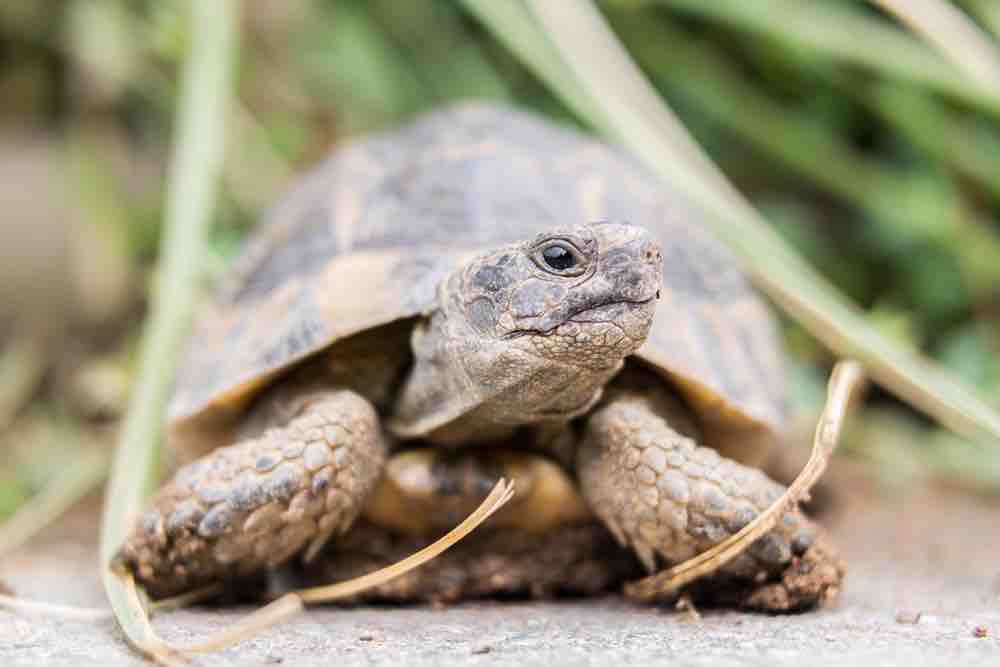
One of the best ways to assess the health of your tortoise is to take the time to closely observe it. By understanding its regular behavior and physical appearance, you’ll be in a better position to spot any anomalies or signs that may indicate health issues. Here are some key aspects to focus on:
1. Observation and Familiarity with Behavior Getting to know your tortoise’s routine and habits will give you a solid foundation for identifying unusual patterns or behaviors. Just like humans, each tortoise has its unique mannerisms, so familiarizing yourself with these will help you discern when something might be amiss.
2. Activity and Mobility The body temperature of a tortoise plays a significant role in its activity levels. When adequately warmed, a tortoise should be able to move with some speed. Here’s what you should look out for:
- Ground Clearance: A healthy tortoise will walk with its plastron (the bottom part of its shell) slightly elevated from the ground.
- Obstacle Navigation: A robust tortoise will exhibit the strength and determination to push objects aside or attempt to navigate through tight spaces.
- Digging and Climbing: These behaviors indicate a curious and active tortoise. Digging might suggest it’s searching for food or preparing a burrow, while climbing showcases its strength and coordination.
- Muscle Tone: The limbs of a healthy tortoise should appear strong and well-toned. It should move them with ease and show no signs of weakness or dragging.
3. Physical Appearance Aside from monitoring its behavior, it’s essential to regularly check the tortoise’s physical appearance. A bright and clear-eyed appearance, smooth shell without cracks, and clean skin free from sores or mites are indicators of good health. Any external changes or anomalies can be an early warning sign of underlying health issues.
In conclusion, regularly spending quality time with your tortoise and paying close attention to its behaviors and physical appearance will equip you with the knowledge to ensure its well-being. If any significant changes are noticed, consult with a veterinarian who specializes in reptiles to address potential health concerns.Inspecting Specific Parts:
- The Eyes: A tortoise’s eyes are windows to its health. They should be radiant and clear, with no signs of discharge or inflammation. The third eyelid, tucked away in the eye’s corner, should be barely noticeable, ensuring the eyes look alert and wide open.
- The Nose: A clear and dry nostril is typically what you’d want to see. While some moisture might be present after eating especially juicy foods, it shouldn’t resemble a consistent nasal discharge. Remember, tortoises boast an impressive sense of smell, vital for identifying various foods.
- The Mouth: The inside of a tortoise’s mouth reveals much about its health. The tongue should predominantly be clear and pink unless recently stained by certain foods. Even without teeth, a healthy tortoise will possess a sturdy bite. Additionally, its beak should be well-formed without signs of excessive growth, and a minor overbite of the upper beak is expected and normal.
Consistent monitoring and being attuned to these signs will empower you to ensure your tortoise’s health and address any concerns promptly.
Assessing the External Health Markers of Your Tortoise
To thoroughly gauge the health of your tortoise, paying close attention to its skin, tail, and excretions is essential. Here’s a breakdown of what to look for:
1. Skin Health:
- Overall Appearance: The skin of a healthy tortoise should be free from noticeable injuries, abrasions, or signs of distress.
- Parasites: It’s important to ensure that there are no ticks, mites, or other external parasites on your tortoise. These parasites can cause discomfort and lead to secondary infections.
- Shedding Patterns: As your tortoise matures, it will undergo shedding, particularly noticeable around the neck area. This natural process results in the skin peeling away in small sections. While it might be tempting, refrain from manually pulling off these shedding pieces, as doing so could cause harm.
2. Tail Condition:
- Cleanliness: The tail is a good health indicator. It should predominantly be clean and dry. A tail soiled with faeces may point to potential hygiene or health issues that need addressing.
3. Excrement Insights:
- Faeces: A tortoise’s faecal matter can provide significant health clues. Ideally, it should be fairly dry, well-structured, and firm. Loose or watery stools can be indicative of dietary issues or potential internal ailments.
- Urine and Urates: Clear urine is a positive sign in tortoises. However, it’s worth noting that certain foods, like dandelions, can temporarily impart a pink hue to the urine. As for urates, these white excretions should have a consistency ranging from as liquid as egg whites to as soft as toothpaste. Hard or gritty urates might be a sign of dehydration or other health concerns.
Regularly inspecting these aspects will not only help you ensure the optimal health of your tortoise but also alert you to potential issues before they become severe. Always consult with a veterinarian if you notice any abnormalities.
